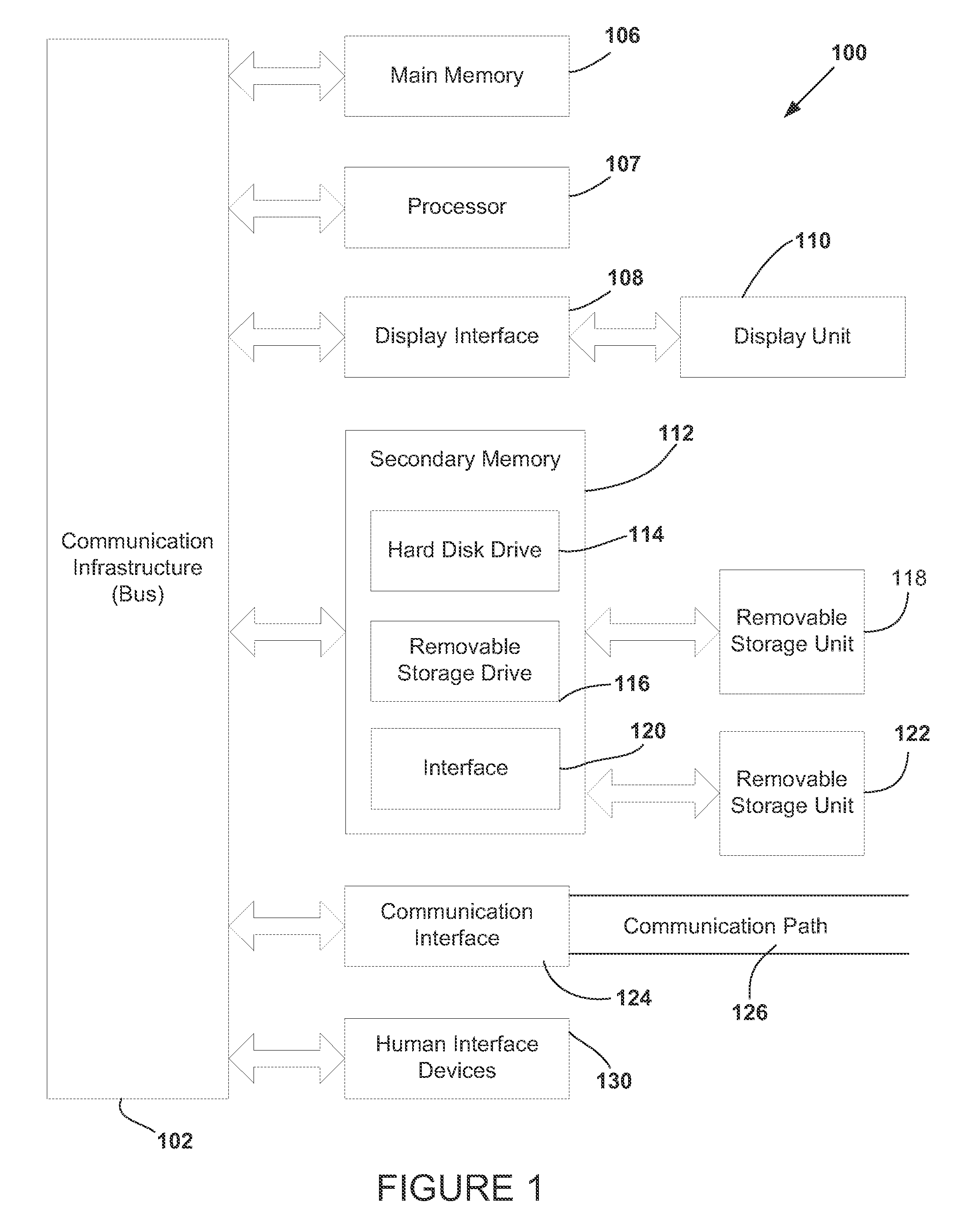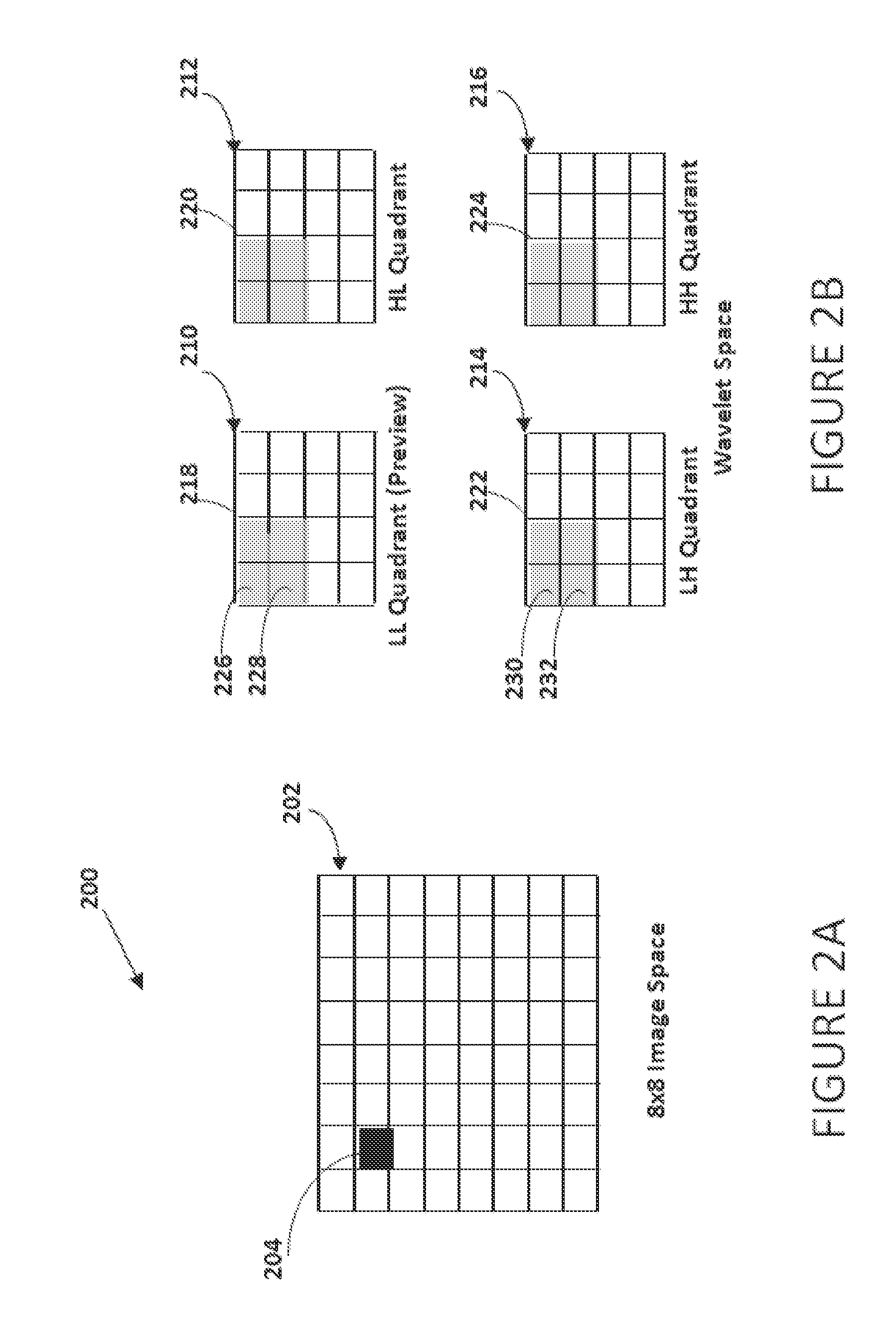Systems and methods for wavelet and channel-based high definition video encoding
a wavelet and channel-based technology, applied in the field of computer systems, can solve the problems of lossy data compression affecting video quality, severely compromising visual quality, limited trade-space available to meet these requirements, etc., and achieve the effect of high hd quality-preserving compression
- Summary
- Abstract
- Description
- Claims
- Application Information
AI Technical Summary
Benefits of technology
Problems solved by technology
Method used
Image
Examples
example 1
Landsat Satellite System Hyper-Dimensional Data
[0368]A scientist wishes to examine the effect of seasonal changes in temperature on flora at various altitudes over the course of one or more years. He has a topographic map that provides accurate surface altitudes for the region of interest. Over the period in question, he is able to collect Landsat satellite imagery on a daily basis, from which he is able to extract an infrared image of the region. Finally, he has detailed temperature readings across the region. He collects a year of data into 365 same-time-of-day, properly oriented images. He then encodes and processes them for video display. Either the encoder or the decoder prepares the video for playback on his RGB display. The scientist assigns green to the infrared component, red to the temperature component, and blue to the numerical complement of altitude. He can now watch his video, as it displays the effect of season and temperature on floral life at various altitudes. The ...
example 2
[0372]Description of an implementation of a limited embodiment of systems and methods of wavelet and channel-based high definition video encoding.
[0373]This description mostly follows the sequencing of the FIG. 5 flowchart. In this embodiment, there are three channels (K=3 in step 508), each of them an RGB color channel. A test of the value of the internal parameter representing the PSCR between the current frame and its predecessor reveals that the two 1920×1080 standard high definition video frames are within the same scene shot.
[0374]As in 512 and 516, the next video frame is imported. Channel number k is set to 1 (red), and level number l is set to 0, indicating the video frame is a level 0 image.
[0375]The first operations in step 524 are to isolate and save channel 1 edge data, as described in FIG. 10. In this embodiment, additional edge isolation and compression operations are used that are not described in FIG. 10. Having saved the necessary edge data, there is no further con...
example 3
[0392]Impact of unconditional level 1 zero-substitution, a level 1 noise filter, and conditional level 2 substitution on two-level wavelet encoding compressibility.
[0393]The purpose of this example is to illustrate both the absolute and relative effectiveness of[0394]Process 1: unconditional replacement of all level 1 support data with zeroes,[0395]Process 2: conditional replacement of level 2 support data with zeroes, without the use of Process 3, a level 1 noise filter, and[0396]Process 3: conditional replacement of level 2 support data with zeroes only after Process 3, a noise filter applied to the level 1 image.
[0397]In one or more embodiments of systems and methods of wavelet and channel-based high definition video encoding, the use of a level 1 noise filter is followed by unconditional level 1 zero substitution and conditional level 2 zero substitution. This example describes and illustrates actual results obtained from applying combinations of these methods to the Y color cha...
PUM
 Login to View More
Login to View More Abstract
Description
Claims
Application Information
 Login to View More
Login to View More - R&D
- Intellectual Property
- Life Sciences
- Materials
- Tech Scout
- Unparalleled Data Quality
- Higher Quality Content
- 60% Fewer Hallucinations
Browse by: Latest US Patents, China's latest patents, Technical Efficacy Thesaurus, Application Domain, Technology Topic, Popular Technical Reports.
© 2025 PatSnap. All rights reserved.Legal|Privacy policy|Modern Slavery Act Transparency Statement|Sitemap|About US| Contact US: help@patsnap.com



